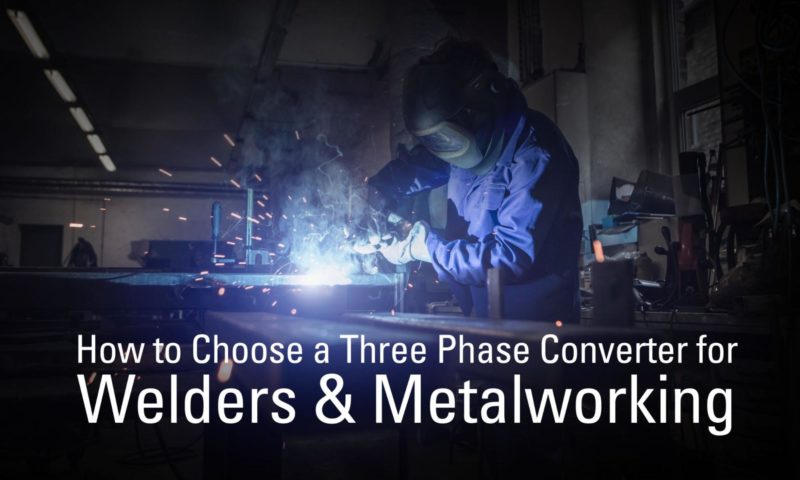A three phase converter is a great way to provide reliable, efficient power to a wide range of the best welders and metalworking equipment. Choosing the right converter for your needs involves considering the load requirements of your equipment, your existing electricity service, and other key factors.
Metalworking equipment can be as varied as the types of metals and applications you take on in your shop. You may be working with voltage-sensitive equipment such as wire EDMs, CNC lathes, and CNC mills. Meanwhile, your general metal fabrication equipment—welders, grinders, shears, brakes, and benders—can have both resistive/motor and non-motor/inductive loads and require single-phase or three-phase power.
How can you power all of it without the expense of running three phase power to your location?
A 3 phase converter can do the trick. Many rotary phase converters are available that can single-handedly accommodate both very small, lightly loaded machines and very large or heavily loaded machines. This article will explore the issue of three phase converters for welders, including the steps to finding the right phase converter for your needs.
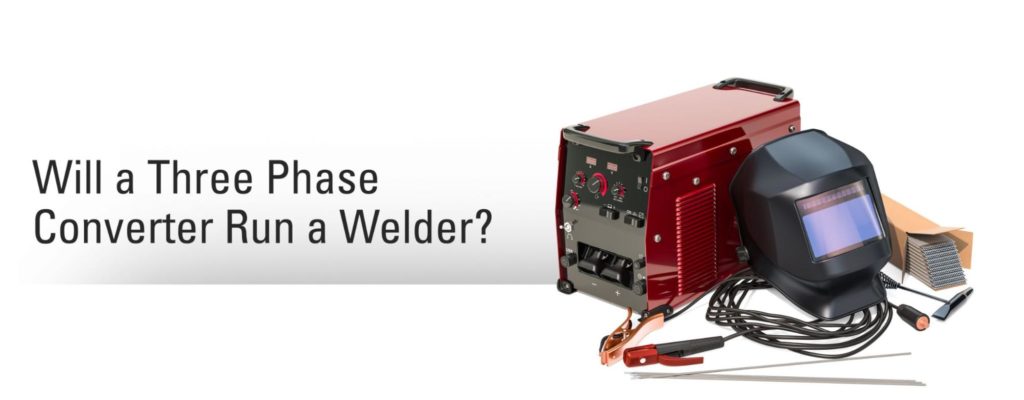
Will a Three Phase Converter Run a Welder?
The short answer is yes, a three phase converter can run any welder you might have: clean, versatile MIG welders, precision TIG welders, and general-purpose stick welders.
A phase converter can help power your welders and other metalworking equipment off of single-phase service by creating an additional line or phase of voltage through the addition of an induction motor or idler/generator to the system.
Phase converters come in two main types: static phase converters, which can start a three-phase load but only run it under lower single phase power; and rotary phase converters, which use a control panel with a start circuit to create true three-phase power.
For most metalworking applications (depending on the most intensive load requirements of your equipment), you’ll need a rotary converter, which will allow you to run your equipment on full three-phase power.
It’s possible to run a three-phase welder off single-phase power, but in that case, the welder’s output would be limited, which may, in turn, limit your welding capabilities. And that would probably defeat the whole purpose of investing in your welding equipment in the first place!
Related Resource
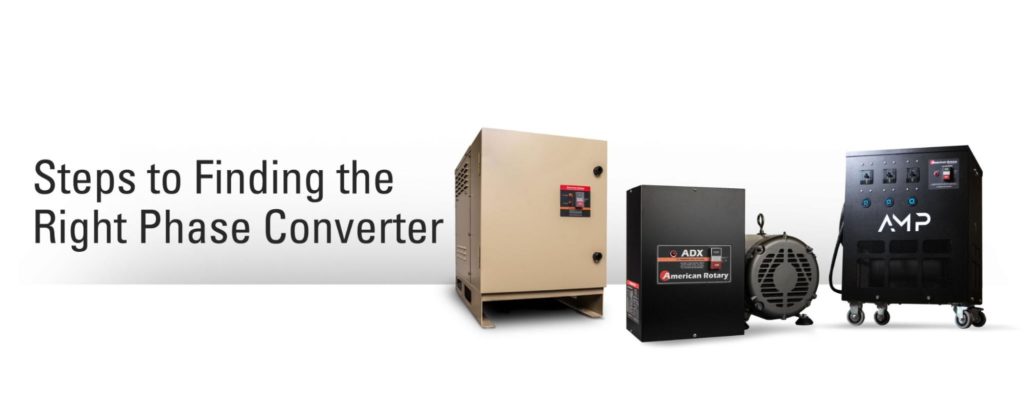
Steps to Finding the Right Phase Converter
While a rotary phase converter can run nearly any type of equipment you need in your shop, you’ll need to get the sizing right to get results you’re happy with. Your existing electrical service and the specifications of all the equipment you plan to use are key pieces of information in this process.
Here are five essential steps to finding the right converter for your needs.

1. Make sure you have enough single phase power to start with.
Here’s how to calculate how much single phase power you need:
What’s the amp draw of your three-phase metalworking machinery load?
3-phase amps x 1.6 = required single-phase amps
In other words, first multiply the amps drawn by your three-phase equipment by 1.6, or 160%, to determine how many amps you need from your single-phase power service.
Required single-phase amps x 1.2 = required single phase amps with 20% cushion
Multiply the single-phase amps you calculated in the first equation by 1.2, or 120%, to allow for a bit of extra power capacity. Most municipalities require this 20% extra cushion.
So, do you have enough single-phase power?
Related Resource

2 Understand Your Load
Is it light, medium, or heavy? Both the startup and operating loads of welders and other metalworking machinery can vary greatly, from light-duty, low-amp welding guns to heavy-duty, high-amp three-phase MIG welders.
Going over the type of machine will help determine which phase converter will work best. But keep in mind that there’s no harm in going with a phase converter sized for a heavier load, even if your current load doesn’t require it. You’ll be ready for changes and upgrades later on.

3 Know the Size of Your Load
Know the horsepower, amps, and kilowatts.
As a rule of thumb, you want to go 2:1, with your phase converter’s capacity at 2 times the size of your equipment load.
For example, if you have a 20 HP motor for your welder, then you need a 40 HP phase converter. You need this extra capacity to cover the start load of the machine and because you’re pulling from single-phase power to operate a three-phase machine.
We should note that, when considering the size of your load, you don’t need to consider the duty cycle of your welding equipment. That’s an important factor to keep in mind for the longevity of your machine—pushing past the duty cycle rating puts an undue burden on the system, and it will wear out more quickly. But for sizing a phase converter, you only need to worry about the total horsepower and overall amp draw.

4 Identify the Location of the Phase Converter
Make sure you buy a phase converter that will stay protected in its environment.
For example, if you do welding, you will want to make sure your converter stays protected from metal shavings. In some cases, the phase converter may need to be portable, you may need it to run multiple machines, or you may need the phase converter to be mounted in a separate location than where the machines will be running.

5 Who are You Buying Your Phase Converter From?
Make sure you are buying from someone who is reputable. We get calls all the time from people who previously bought a phase converter from someone who made one in their garage and it’s not working right.
By using a quality product to begin with, you will be able to get the exact amount of three phase power you need, protect your equipment, and be able to scale appropriately as needed.
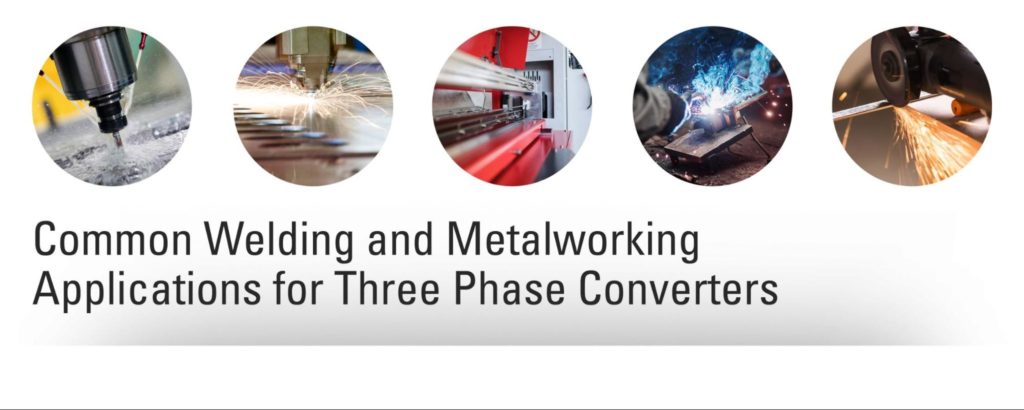
Common Welding and Metalworking Applications for Three Phase Converters
Rotary phase converters like those from American Rotary are perfectly suited for precision metalworking equipment such as:
- Wire EDMs
- CNC lathes
- CNC mills
- Other voltage-sensitive applications
Phase converters can also simultaneously run general metal fabrication equipment such as:
- Welders of all types
- Grinders
- Press/Shears with flywheel or hydraulic pump
- Plasma cutters
- Ironworkers
- Brakes
- Benders
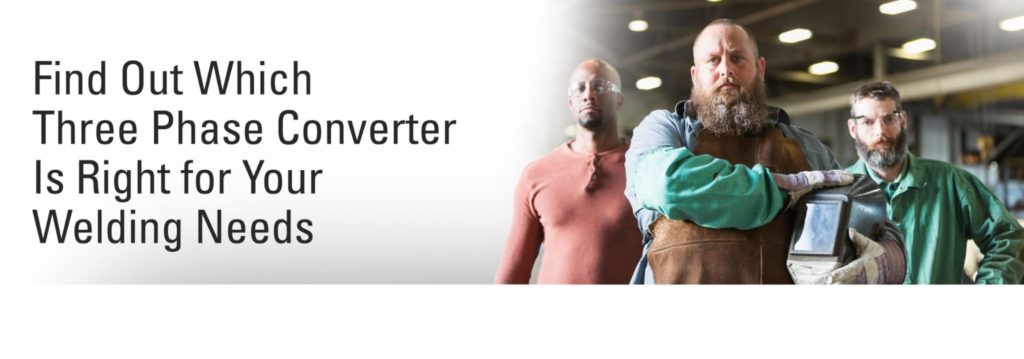
Find Out Which Three Phase Converter Is Right for Your Welding Needs
American Rotary phase converters produce balanced 3-phase output to accommodate both very small, lightly loaded metalworking machines and very large or heavily loaded machines all with just one phase converter.
A great example is our AD Digital Smart Series Rotary Phase Converter – a high-performance digital system specifically suited for voltage-sensitive equipment. The AD Series will handle just about any load, especially resistive, rectified, and computer loads such as CNC, VFD, EDM, and battery chargers.
Every American Rotary system comes with our exclusive integrated soft-start VIT (Variable Impedance Technology) idler/generator, which drastically reduces inrush (starting) current for reliable starts with no voltage drop.
The capacity of a rotary phase converter is really only limited by your available single-phase current. So, which size phase converter do you need? For help choosing the right size system, you can try this handy sizing chart.
Or you can contact our engineers here. We’re always happy to help you get the right answer for your shop!



